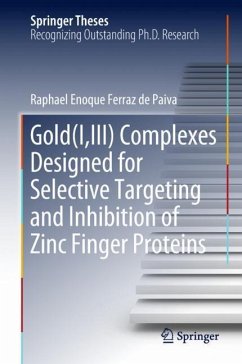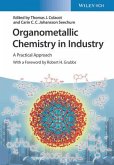This book examines Au (I, III) complexes that selectively attack and inhibit zinc finger proteins (ZnFs) for potential therapeutic use. The author explores gold(I)-phosphine, gold(III) complexes with N^N and C^N donors as inhibitors of the HIV-1 nucleocapsid protein (NCp7), in comparison to the human transcription factor Sp1. To determine the coordination sphere of the gold adducts formed by interaction with ZnFs, two innovative approaches are used, based on Travelling-Wave Ion Mobility coupled with Mass Spectrometry (TWIM-MS), and X-ray Absorption Spectroscopy. Both approaches are proven to yield valuable structural information regarding the coordination sphere of gold in the adducts. In addition, the organometallic compound [Au (bnpy)Cl2] is evaluated. The system is shown to be capable of inhibiting ZnFs by means of C-S coupling.








